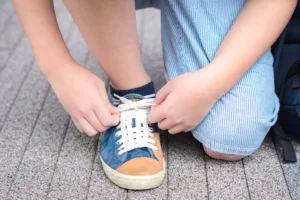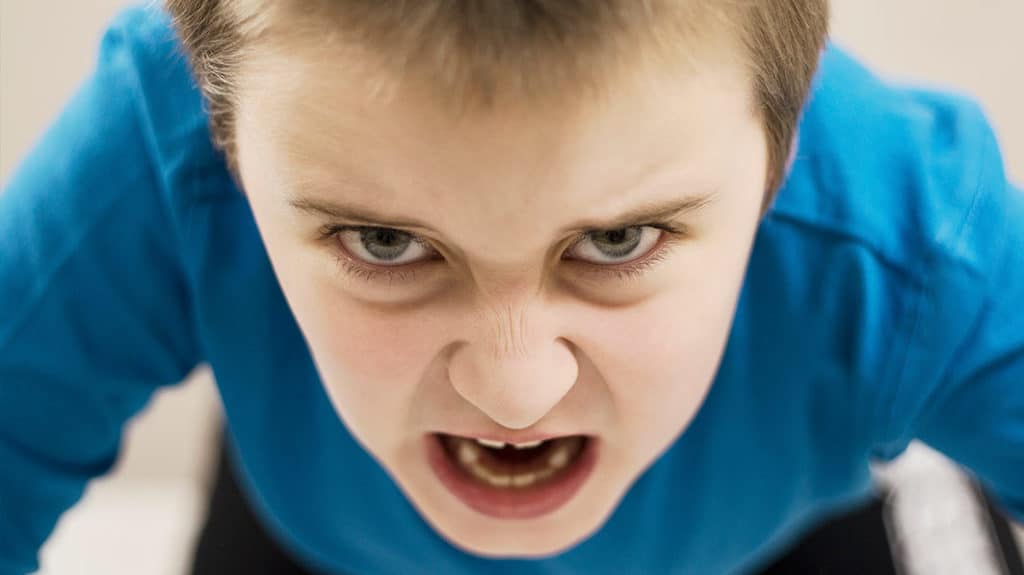
Those Clumsy Middle-school Years
Middle schoolers can be clumsy. Here is a way to help your child through those awkward growth spurts.

Help your tween grow into a thoughtful young adult by prioritizing your relationship rather than simply listing rules.
When I was a teacher I could never understand what happened to the 2nd graders during summer vacation. When I walked out the school doors in May and returned three months later, they were noticeably more grounded and grown up. It was part of a dramatic shift from being a child to preparing to be an adolescent. It had something to do with managing tween anger.
The word “adolescent” might scare you because you’re anything but ready for your third grader to grow up. However, because your eight-year-old is more emotionally aware and and intellectually advanced, you can help him understand more about himself — including how he handles his anger. In fact, these anger strategies apply to kids in the tween years between the ages of 9 to 12.
My mother always says that sometimes you have to pick your battles and some aren’t worth fighting. This couldn’t be more true as your child progresses from being a child to an adolescent.
As your child grows intellectually and emotionally between the ages of eight and twelve, you will naturally want to grant him more responsibility so that he can grow into a responsible adult. This means that when he gets mad or rants and raves because he wants to buy a cheap toy with his hard-earned lawn mowing money, and you know it’s a bad idea, you can give up your ground and let the consequences of his choice speak for themselves. This way, you can spare yourself a battle and he can grow into a calm, thoughtful and discriminating adult who doesn’t allow his emotions to rule him.
Dr. Kevin Leman calls this “reality discipline” because reality serves up the discipline, not you. For some kids, especially those who are strong-willed and often demand that they get their way, it’s a great way to go. Of course, you can’t say yes to everything, but you can make it a practice not to say no just for the sake of saying it — and you can try to say yes often.
With life pressures, it can be difficult to squeeze in teachable moments with your child. However, it’s imperative that if you want your child to learn how to handle his anger in a constructive way, you’ll need to speak with him when he’s not angry.
Think back to the last time when you were really angry. Could anyone reason with you? Did your breathing accelerate? Were you talking in circles? Did you forgot what the other person said (if you were locked in battle)? Obviously, it’s tough to reason with someone who is out of control with anger. That’s why you’ll need to speak with your child to make a constructive plan to handle anger when he’s not angry.
As a part of helping your child, let him know that since he’s getting older, he can take more responsibility in helping himself, since you won’t always be there for him. Express sympathy by letting him know that it’s normal to get angry sometimes. But also tell him that how he reacts to his anger is his choice and how he chooses will either make him more miserable or help him.
During one of your non-anger teachable moments, you can use a technique I used as a teacher. It’s important that you use this technique shortly after the event because he may not remember what happened later. Ask him how he felt (in his emotions and his body), what happened that made him angry, how he responded, what the outcome was and how he could respond next time. Over time, he may begin to see the connection between his actions and the result.
Once your child begins to see that his anger can be a problem, and that it’s making his life difficult, you can calmly consult with him about the consequences if he responds inappropriately. First, you’ll need to determine what “inappropriate” means. By discussing with him, ask him if it involves hitting someone, calling them names or spitting. Let him decide. I’ve found that most kids are amazingly honest about what is right and wrong when they’re not threatened.
After you have created a list of what is not an acceptable response to anger, you can create another list of what he will do when he acts inappropriately. For example, will he put himself in time-out? Spend the afternoon in his room? Or give a prized toy to a friend?
You can also offer healthy alternatives to express his anger, such as scream outside until he feels better, punch a soft toy in the privacy of his room, or draw a picture about his feelings when he’s angry.
Once your plan is complete and you’ve both agreed, both of you can sign it and post it somewhere obvious for future reference. This way, he can’t say he was never part of the decision-making process, and it puts him in charge of his response.
Above all, whenever your tween is angry, remain calm. This will let him know that you are on his side and working with him to help him master anger.
Copyright © 2008 Shana Schutte. All rights reserved. International copyright secured.





Shana Schutte is an author and speaker. Find more of her work at shanaschuttecoaching.com.

Middle schoolers can be clumsy. Here is a way to help your child through those awkward growth spurts.

Helping your children deal with their anger can seem impossible when emotions run high. But you can train your kids to recognize triggers and replace them with truths that will help them get out of their angry cycle.

Physical abuse is a means of coercively controlling another through fear and intimidation. It involves intentionally or recklessly using physical force that may result in bodily injury or physical pain.